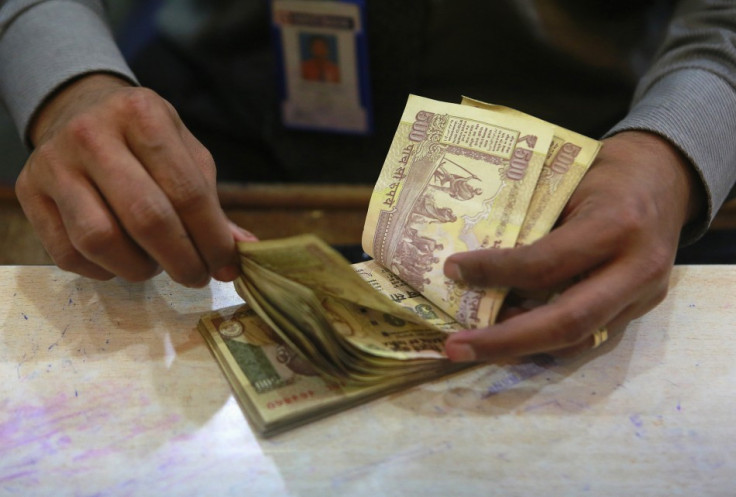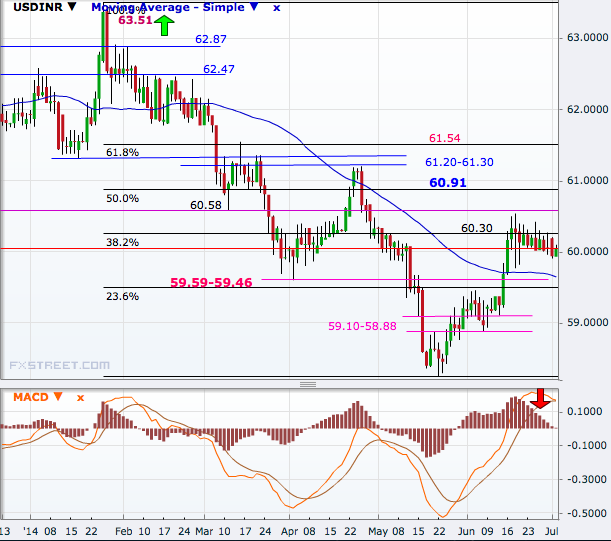Indian Rupee Keeps Upward Trend Ahead of India Budget 2014 and US Jobs Data

The Indian rupee kept its upward momentum ahead of the US non-farm payrolls and India's 2014 budget though it weakened against the US dollar on 2 July compared with the previous close, as international crude oil prices edged higher amid the ongoing Iraq crisis.
At 5:08 GMT, USD/INR traded at 60.04, up 0.18% from its previous close.
Rupee had strengthened to a 12-day high of 59.90 on Tuesday, helped by some easing of oil supply woes and a hike in state-controlled fuel prices which increased hopes of better fiscal management by the newly elected Modi government.
The Indian Oil Corporation announced on 1 July it would raise petrol prices by 1.69 rupee a litre and diesel prices by 0.5 rupee a litre. On 20 June, Indian Railways had increased passenger fares by 14.2% and freight fares by 6.5%.
On 10 July, the Narendra Modi government will present its first budget and the document is expected to keep the investment prospects of Asia's third largest economy upbeat.
Additional moves in the direction of increasing inflows and narrowing down the fiscal deficit will strengthen the rupee.
The Dollar Move
Rupee was also affected by the broad dollar direction and global risk appetite. Uncertain growth signals from the world's largest economy have been keeping its currency under pressure in recent weeks but it found some support on Wednesday.
The USD index, the gauge that measures the greenback's strength against the currencies of the six largest trading partners of the US, rose to 79.85 on Wednesday after falling to a near two-month low of 79.74 on Tuesday.
The US Markit manufacturing PMI (purchasing managers' index) dropped to 57.5 in May and the ISM manufacturing PMI slipped to 55.3 from 55.4 while analysts had been expecting a rise to 55.8, according to data released on Tuesday.
Weaker growth signals from the US are likely to prolong any additional tightening measures by the Federal Reserve, thereby assisting global equities as easier dollar liquidity will usually increase the demand for risk assets .
The market is now waiting for the very important US jobs data, due on 3 July. The consensus is for a marginal drop in the non-farm payroll additions to 213,000 in June from 217,000 registered for May. The unemployment rate is estimated to be steady at 6.3%.
A significant surprise in any direction will obviously have an impact on the dollar.
Technical Outlook
USD/INR has been trending lower since touching a near two-month high of 60.53 on 18 June, the day US Fed Chair Janet Yellen said interest rates in the US are to be kept at low levels as the recovery is not strong enough for an additional policy tightening move.
The near 4% rally from the 22 May low of 58.23 to the 18 June high, in fact, was a move that failed below 60.91, the 50% Fibonacci retracement of the 27 January to 22 May downtrend.
The moving average convergence divergence (MACD) shows a bearish signal just got triggered on the daily chart.

On the way down, the pair has broken through the 38.2% level of 60.30 and is now targeting the crucial 59.59-59.46 region. A break below that will confirm the reversal of the uptrend since 22 May and open doors to 59.10 and 58.88 ahead of a retest of the May low.
On the higher side, USD/INR has resistance in the 61.20-61.30 area once the 60.91 barrier is broken. Further north, the 61.8% level of 61.54 is a level to watch ahead of the 62.47-62.87 region and then the January peak of 63.51.
© Copyright IBTimes 2025. All rights reserved.






















